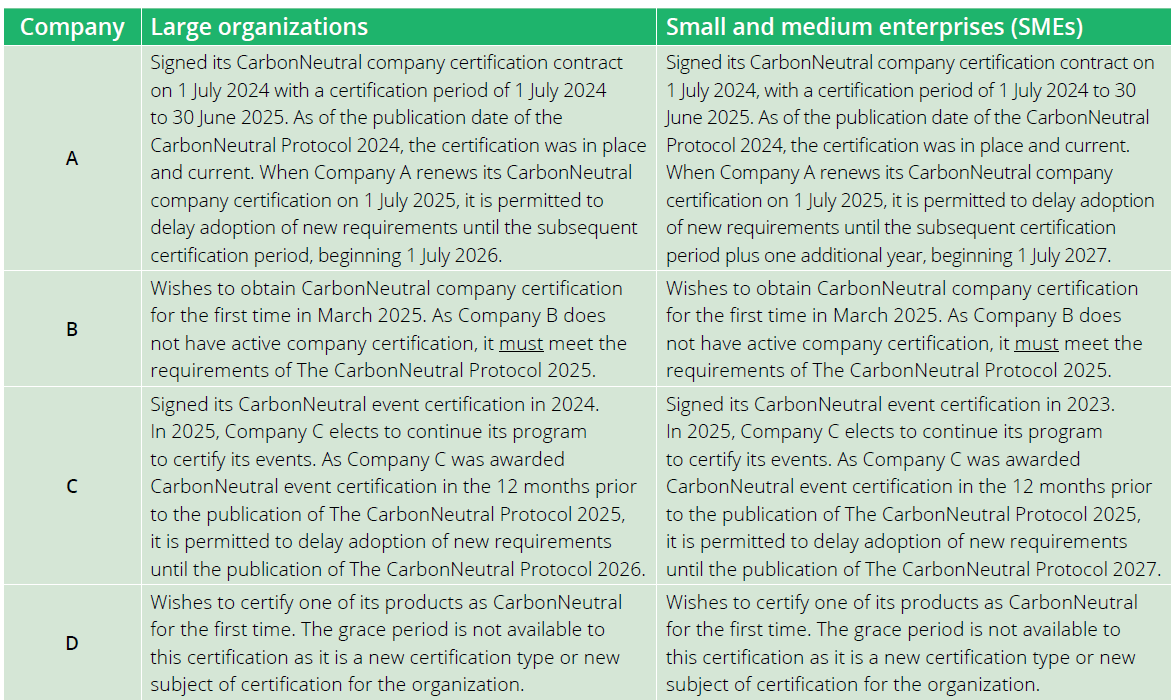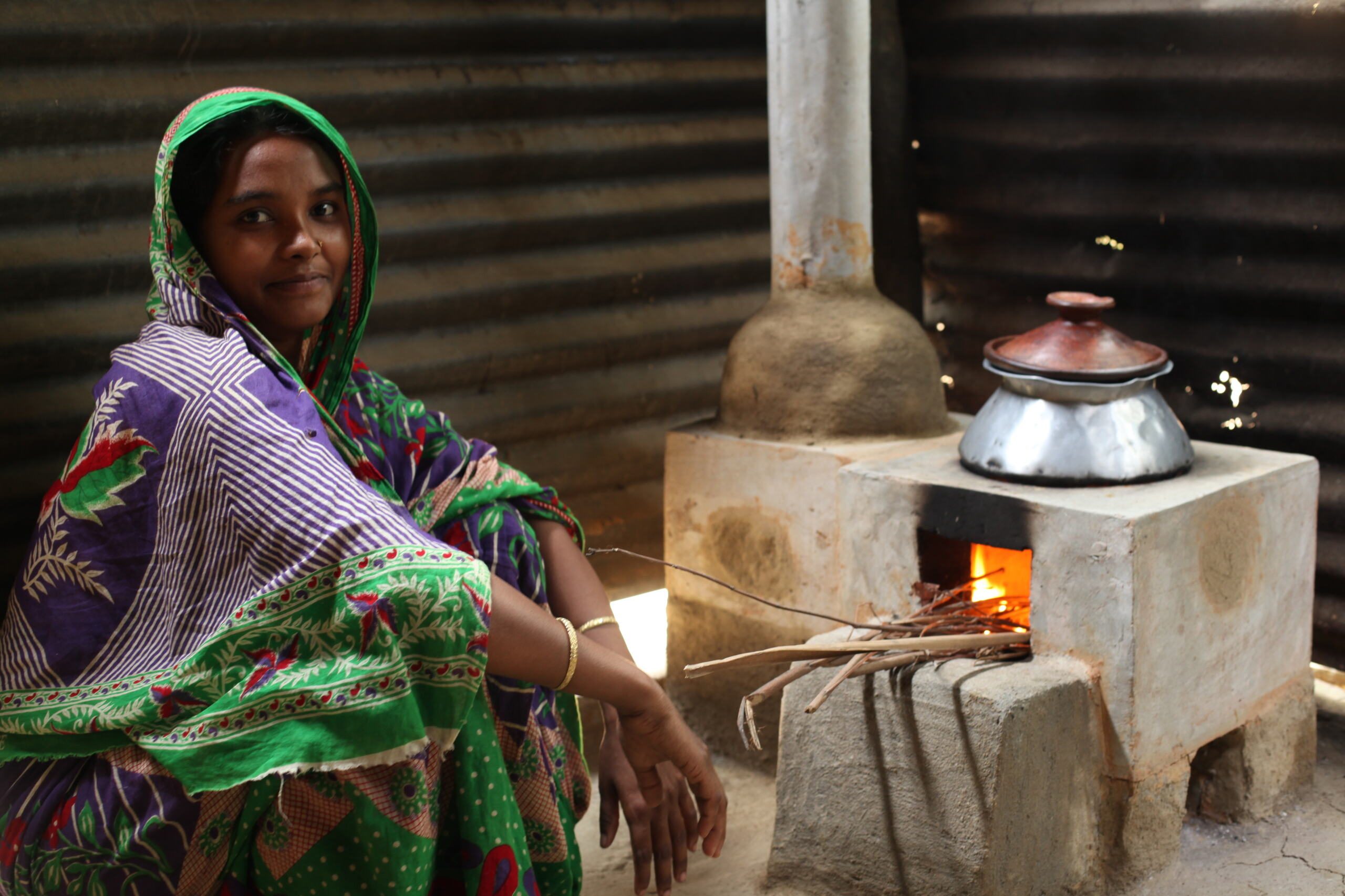Following publication of a new version of The CarbonNeutral Protocol, a grace period is permitted for organizations with active CarbonNeutral® certification, to adapt to new requirements.
This grace period allows organizations to defer incorporating any new requirements introduced in the latest revision until their next certification renewal date. The grace period extends until the publication of the subsequent version of The CarbonNeutral Protocol, which is approximately 12 months, and can be applied to certification renewals that begin within this period of time. New requirements can be deferred only once (one renewal) under the grace period. Certifications renewed a second time within the grace period are subject to the full requirements of the Protocol, with the exception of certifications outlined in the following paragraph.
Where an organization has been awarded a certification type which does not have a defined period and expiry, such as a CarbonNeutral event, the grace period is permitted where a certification of the same type was awarded within the 12 months prior to the publication of the current version of The CarbonNeutral Protocol. Such certifications may defer new requirements under the grace period more than once. All organizations are highly encouraged to adopt new requirements immediately, where they are able to do so.
Scheduled changes which have been published and communicated in previous versions of The CarbonNeutral Protocol may not be deferred. This restriction is in place because the intention of the grace period is solely to allow organizations to adapt to previously unknown changes to The CarbonNeutral Protocol and should not be used merely to delay action.
Table 2 shows illustrative examples of the application of the grace period, and allowances for small and medium enterprises.
Table 2: Illustrative Examples of the Application of the Grace Period and Allowance for Small Companies

Measuring and reporting on sustainability can be a challenge for any organization.
For small companies, which often have more limited resources, this is especially true. As a result, organizations withhold active certification and are considered an SME, will be permitted one additional year to comply with the new requirements implemented within this version of The CarbonNeutral Protocol, which in total provides a grace period of two years. Companies that qualify as an SME can defer new requirements in their certification renewal up to two times in total across the grace periods. Illustrative examples of the application of the grace period for SMEs are shown in Table 2.
There is not currently one generally recognized definition of what constitutes an SME. Different regulatory agencies and standards around the world maintain different definitions. In order to take advantage of the additional year available to comply with updated requirements, organizations should evaluate themselves as an SME only under an appropriate and aligned standard. For example, an EU-based organization may consider the requirements of the EU Corporate Sustainability Reporting Directive (CSRD) the most appropriate due to geographic alignment and their existing classification for regulatory ESG reporting.
Commonly used and accepted definitions of SMEs are shown in Table 1. This list is not exhaustive, so organizations operating outside of these regions should use local regulatory or other relevant, recognized frameworks.

Image: Bondhu Chula Cookstoves, Bangladesh: The Bondhu Chula stove is designed to ensure more efficient and cleaner home cooking, working with micro-entrepreneurs who receive training in stove production, sales and marketing and after-sales service.
Table 1: Commonly Used and Accepted Definitions of SMEs

As illustrated in Figure 1, there are five steps to achieving CarbonNeutral® certification. These five steps are mandatory for all classes of certification. While these steps are set out sequentially, they may be carried out in parallel.
Foundation: Governance
The systems and frameworks by which the organization is directed and controlled that support responsible climate action and intentional risk management.
Figure 1: Five Steps to Achieving CarbonNeutral® Certification
Give a clear description of the subject
Provide a complete and accurate account of the GHG emissions of the subject and broader organization
Set credible targets to reduce the measured emissions of the subject and broader organization
Deliver internal emissions reductions and finance additional reductions and removals outside your value chain to compensate for unabated emissions
Disclose accurate and transparent information about your climate program